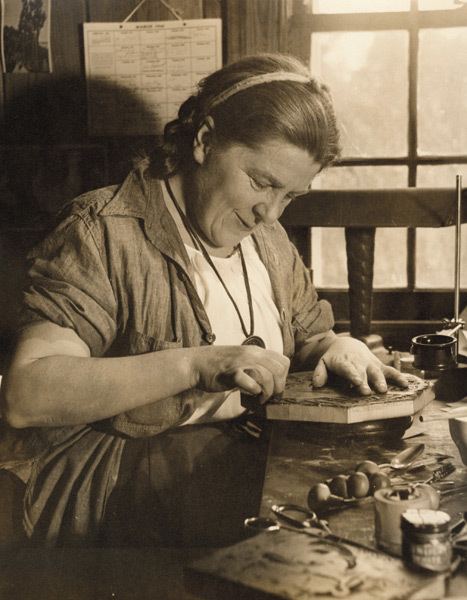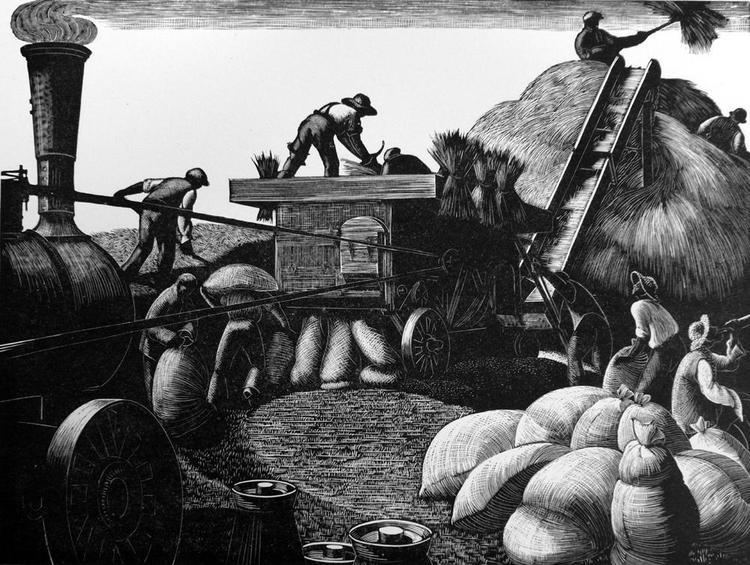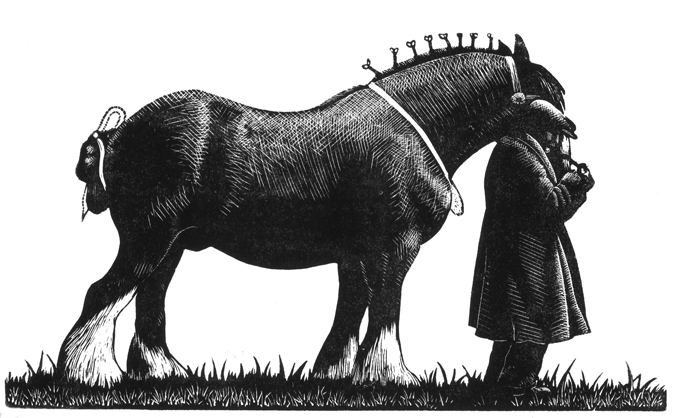Name Clare Leighton Role Artist | Siblings Roland Leighton | |
 | ||
Died November 1989, Connecticut, United States Books Four hedges, Where land meets sea | ||
Wuthering Heights - Illustrations by Clare Leighton
Clara Ellaline Hope Leighton (sometimes Clare Veronica Hope Leighton) (12 April 1898 – 4 November 1989) was an English/American artist, writer and illustrator, best known for her wood engravings.
Contents
- Wuthering Heights Illustrations by Clare Leighton
- Early life and education
- Career
- Personal life
- References
Early life and education

Clare Leighton was born in London on 12 April 1898, the daughter of Robert Leighton (1858-1934) and Marie Connor Leighton (1865-1941), both authors. Clare lived her early life in the shadow of her older brother, Roland - her mother's favorite; the family's nickname for Clare was "the bystander". Even so, her early efforts at painting were encouraged by her parents and her uncle Jack Leighton, an artist and illustrator. In 1915, Leighton began formal studies at the Brighton College of Art and later trained at the Slade School of Fine Art (1921–23), and the Central School of Arts and Crafts, where she studied wood engraving under Noel Rooke.

After completing her studies, Leighton took time to travel through Europe, stopping in Italy, France, and the Balkans. She sketched landscapes and lower-class workers, developing an affinity for portraying rural life.
Career

During the late 1920s and 1930s, Leighton visited the United States on a number of lecture tours, emigrating to the US in 1939. She lived in Baltimore for a while and became friends with H. L. Mencken. Leighton became a naturalized citizen in 1945. From 1943 to 1945 she was a member of the Department of Art, Aesthetics, and Music at Duke University. In 1945 she was elected into the National Academy of Design as an Associate member and became a full Academician in 1949.

Over the course of a long and prolific career, Leighton wrote and illustrated numerous books praising the virtues of the countryside and the people who worked the land. During the 1920s and 1930s, as the world around her became increasingly technological, industrial, and urban, Leighton continued to paint rural working men and women. In the 1950s she created designs for Steuben Glass, Wedgwood plates, several stained glass windows for churches in New England, and for the transept windows of Worcester Cathedral, England.

The best known of her books are The Farmer's Year (1933; a calendar of English husbandry), Four Hedges - A Gardener's Chronicle (1935; the development of a garden from a meadow she had bought in the Chilterns) and Tempestuous Petticoat; The story of an invincible Edwardian (1948; describing her childhood and her bohemian mother). Autobiographical text and illustrations are available in Clare Leighton: the growth and shaping of an artist-writer, published 2009.
Personal life
Leighton had two brothers: the elder, Roland Leighton, was killed in action in December 1915, and is immortalised in Vera Brittain's memoir, Testament of Youth; the younger Evelyn, a Royal Navy officer, received the OBE in 1942.
Clare Leighton met the radical journalist H. N. Brailsford in 1928 and they lived together for several years. He was separated from a wife who refused him a divorce. When Brailsford's wife died in 1937, leaving the way clear for the couple to marry, he suffered an emotional breakdown, destroying his relationship with Leighton who left for a new life in the US in 1939. She never married.
Leighton died 4 November 1989. Her ashes are buried in a cemetery in Waterbury, Connecticut.
